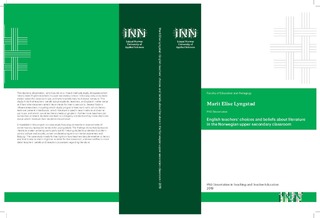English teachers’ choices and beliefs about literature in the Norwegian upper secondary classroom
Abstract
This doctoral dissertation presents a mixed methods study discussing the what, how, and why of literature in the upper secondary English classroom in Norway. More specifically, the study examines which literary texts English teachers view as suitable and/or select for classroom use, and which beliefs about literature influence their choices. The empirical data that the analysis builds on have been collected using both quantitative and qualitative methods, namely a questionnaire and interviews.
The current Knowledge Promotion curriculum does not specify which text types, authors, and/or titles students should read. This means that teachers today have great freedom in choosing literature for their classrooms. This study finds that several factors influence teachers’ choices, including which study programs teachers work with, which literary texts are present in textbooks, which literature is used in examinations and earlier curricula, and which countries the literary texts originate in. Furthermore, teachers’ choices and beliefs about literature are linked to their text selection processes: teachers can be teacher-oriented, student-oriented, or collegially oriented as they make decisions about which literature their students should read. Based on these findings, I argue that teacher beliefs about students, teachers, and subject matter serve as filters when teachers select literary texts for their classroom.
Embedded in this project is a case study focusing on teachers’ assessments of contemporary dystopian literature for young adults. It addresses issues of didactic relevance in a popular literary genre, exemplified by four novels. The findings show that dystopian literature is seen as being particularly apt for helping students understand contemporary culture and society and become more environmentally aware, and they have potential in terms of several aims of the core curriculum, especially Bildung. The case study sheds further light on how teachers decide whether a literary text that is new to them might be suitable for the classroom, and exemplifies in more detail teachers’ beliefs and selection processes.

